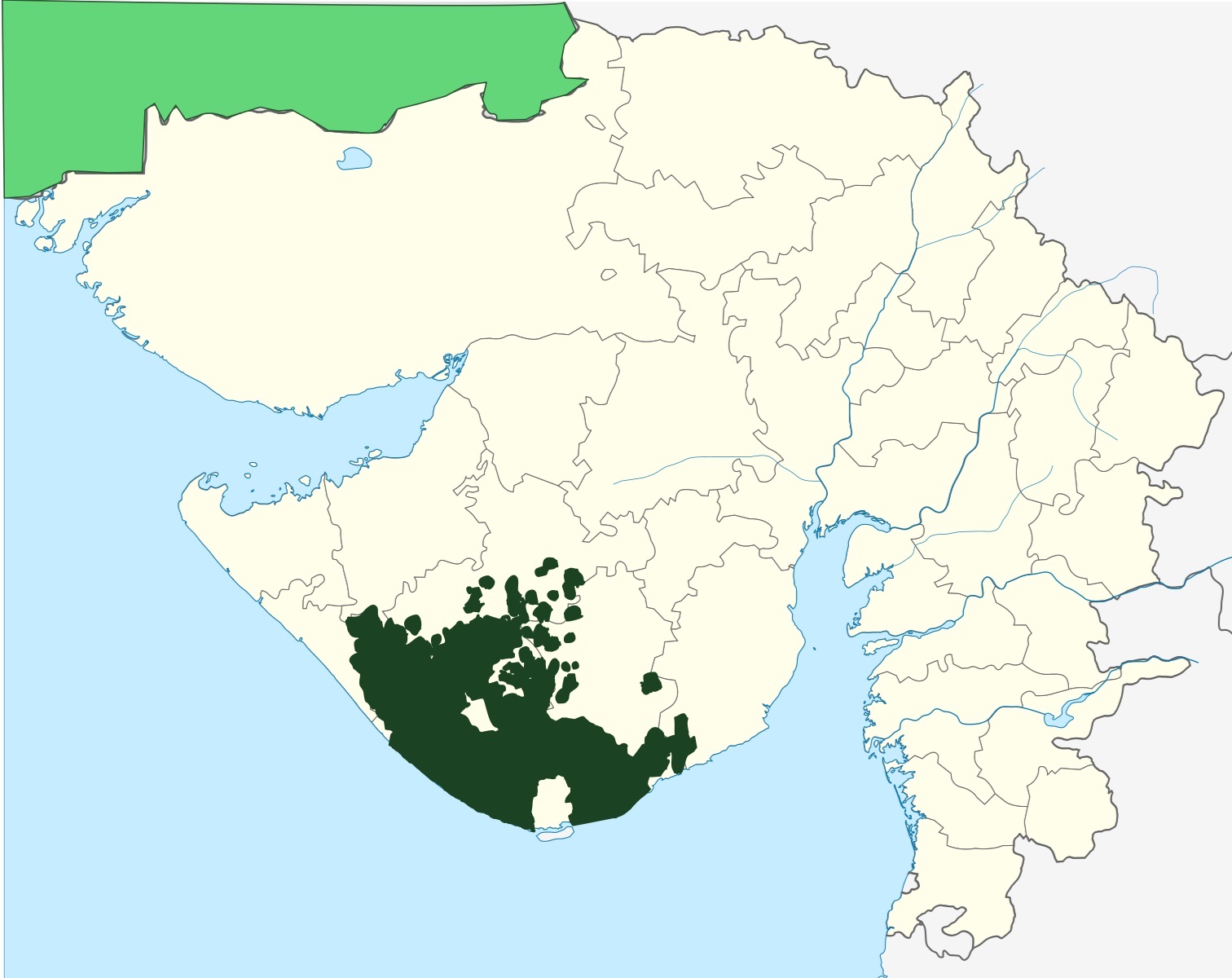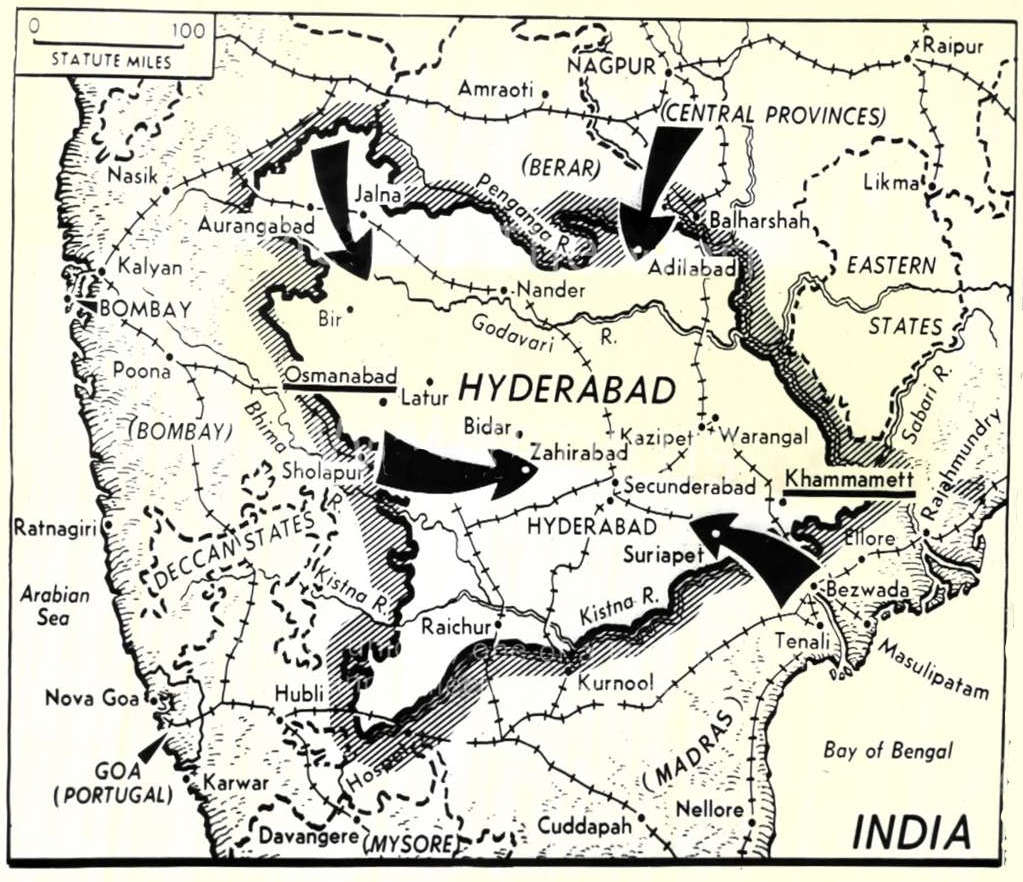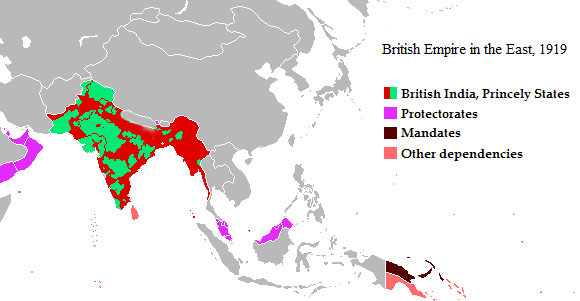|
Princely States Of India
A princely state (also called native state or Indian state) was a nominally sovereign entity of the British Indian Empire that was not directly governed by the British, but rather by an Indian ruler under a form of indirect rule, subject to a subsidiary alliance and the suzerainty or paramountcy of the British crown. There were officially 565 princely states when India and Pakistan became independent in 1947, but the great majority had contracted with the viceroy to provide public services and tax collection. Only 21 had actual state governments, and only four were large (Hyderabad State, Mysore State, Jammu and Kashmir State, and Baroda State). They acceded to one of the two new independent nations between 1947 and 1949. All the princes were eventually pensioned off. At the time of the British withdrawal, 565 princely states were officially recognised in the Indian subcontinent, apart from thousands of zamindari estates and jagirs. In 1947, princely states covered 40% of t ... [...More Info...] [...Related Items...] OR: [Wikipedia] [Google] [Baidu] |
East India Company
The East India Company (EIC) was an English, and later British, joint-stock company founded in 1600 and dissolved in 1874. It was formed to trade in the Indian Ocean region, initially with the East Indies (the Indian subcontinent and Southeast Asia), and later with East Asia. The company seized control of large parts of the Indian subcontinent, colonised parts of Southeast Asia and Hong Kong. At its peak, the company was the largest corporation in the world. The EIC had its own armed forces in the form of the company's three Presidency armies, totalling about 260,000 soldiers, twice the size of the British army at the time. The operations of the company had a profound effect on the global balance of trade, almost single-handedly reversing the trend of eastward drain of Western bullion, seen since Roman times. Originally chartered as the "Governor and Company of Merchants of London Trading into the East-Indies", the company rose to account for half of the world's trad ... [...More Info...] [...Related Items...] OR: [Wikipedia] [Google] [Baidu] |
Jammu And Kashmir (princely State)
Jammu and Kashmir, officially known as the Princely State of Kashmir and Jammu, was a princely state during the Company rule in India from 1757 to 1858 as well as the British Raj in India from 1846 to 1952. The princely state was created after the First Anglo-Sikh War, from the territories that had earlier been in the Sikh Empire. At the time of the partition of India and the political integration of India, Hari Singh, the ruler of the state, delayed making a decision about the future of his state. However, an uprising in the western districts of the state followed by an attack by raiders from the neighbouring Northwest Frontier Province, supported by Pakistan, forced his hand. On 26 October 1947, Hari Singh acceded to India in return for the Indian military being airlifted to Kashmir to engage the Pakistan-supported forces, starting the Kashmir conflict. The western and northern districts presently known as Azad Kashmir and Gilgit-Baltistan passed to the control of Pak ... [...More Info...] [...Related Items...] OR: [Wikipedia] [Google] [Baidu] |
Annexation Of Junagadh
Junagadh was a princely state of the British Raj, located in what is now Gujarat, outside but under the suzerainty of British India. In the independence and partition of British India of 1947, the 565 princely states were given a choice to either join the new Dominion of India or the newly formed state of Pakistan. The Nawab of Junagadh, Muhammad Mahabat Khanji III, a Muslim whose ancestors had ruled Junagadh and small principalities for some two hundred years, decided that Junagadh should become part of Pakistan, much to the displeasure of many of the people of the state, an overwhelming majority of whom were Hindus, about 80%. The Nawab acceded to the Dominion of Pakistan on 15 August 1947, against the advice of Lord Mountbatten, arguing that Junagadh joined Pakistan by sea. The principality of Babariawad and Sheikh of Mangrol reacted by claiming independence from Junagadh and accession to India, although the Sheikh of Mangrol withdrew his accession to India the very ... [...More Info...] [...Related Items...] OR: [Wikipedia] [Google] [Baidu] |
Bantva Manavadar
Bantva-Manavadar or Manavadar State was a princely state during the era of the British Raj in India. It was located on the Kathiawar peninsula in Gujarat. See also *Political integration of India * Bantva Memons * Bantva References External links * This article incorporates text from a publication now in the public domain The public domain (PD) consists of all the creative work to which no exclusive intellectual property rights apply. Those rights may have expired, been forfeited, expressly waived, or may be inapplicable. Because those rights have expired, ...: {{cite book, title=Gazetteer of the Bombay Presidency: Kathiawar, url=https://archive.org/details/1884GazetteerByBombayPresidencyVol8Kathiawar349D, year=1884, publisher=Printed at the Government Central Press, Bombay, volume=VIII, pages=377–378 Princely states of India Pashtun dynasties Muslim princely states of India History of Gujarat 1733 establishments in India 1947 disestablishments in Ind ... [...More Info...] [...Related Items...] OR: [Wikipedia] [Google] [Baidu] |
Junagarh (state)
Junagarh or Junagadh ( ur, ) was a princely state in Gujarat ruled by the Muslim Babi dynasty in British India, until its integration into the Union of India in 1948. History Muhammad Sher Khan Babai was the founder of the Babi Pashtun dynasty of Junagarh in 1654. His descendants, the Babi Nawabs of Junagarh, conquered large territories in southern Saurashtra. However, during the collapse of the Mughal Empire, the Babis became involved in a struggle with the Gaekwad dynasty of the Maratha Empire over control of Gujarat during the reign of the local Mohammad Mahabat Khanji I. Mohammad Khan Bahadur Khanji I declared independence from the Mughal governor of Gujarat subah, and founded the state of Junagarh in 1730. This allowed the Babi to retain sovereignty of Junagarh and other princely states. During the reign of his heir Junagarh was a tributary to the Maratha Empire, until it came under British suzerainty in 1807 under Mohammad Hamid Khanji I, following the Second Ang ... [...More Info...] [...Related Items...] OR: [Wikipedia] [Google] [Baidu] |
Operation Polo
Operation Polo was the code name of the Hyderabad " police action" in September 1948, by the then newly independent Dominion of India against Hyderabad State. It was a military operation in which the Indian Armed Forces invaded the Nizam-ruled princely state, annexing it into the Indian Union. At the time of Partition in 1947, the princely states of India, who in principle had self-government within their own territories, were subject to subsidiary alliances with the British, giving them control of their external relations. With the Indian Independence Act 1947, the British abandoned all such alliances, leaving the states with the option of opting for full independence. However, by 1948 almost all had acceded to either India or Pakistan. One major exception was that of the wealthiest and most powerful principality, Hyderabad, where the Nizam, '' Mir'' Osman Ali Khan, Asaf Jah VII, a Muslim ruler who presided over a largely Hindu population, chose independence and hoped to m ... [...More Info...] [...Related Items...] OR: [Wikipedia] [Google] [Baidu] |
Kashmir Dispute
The Kashmir conflict is a territorial conflict over the Kashmir, Kashmir region, primarily between India and Pakistan, with China playing a third-party role. The conflict started after the partition of India in 1947 as both India and Pakistan claimed the entirety of the former princely state of Jammu and Kashmir (princely state), Jammu and Kashmir. It is a dispute over the region that escalated into three wars between India and Pakistan and several other armed skirmishes. India controls approximately 55% of the land area of the region that includes Jammu Division, Jammu, the Kashmir Valley, most of Ladakh, the Siachen Glacier, and 70% of its population; Pakistan controls approximately 30% of the land area that includes Azad Kashmir and Gilgit-Baltistan; and China controls the remaining 15% of the land area that includes the Aksai Chin region, the mostly uninhabited Trans-Karakoram Tract, and part of the Demchok sector. After the partition of India and 1947 Poonch rebellion, a ... [...More Info...] [...Related Items...] OR: [Wikipedia] [Google] [Baidu] |
First Kashmir War
First or 1st is the ordinal form of the number one (#1). First or 1st may also refer to: *World record, specifically the first instance of a particular achievement Arts and media Music * 1$T, American rapper, singer-songwriter, DJ, and record producer Albums * ''1st'' (album), a 1983 album by Streets * ''1st'' (Rasmus EP), a 1995 EP by The Rasmus, frequently identified as a single * ''1ST'', a 2021 album by SixTones * ''First'' (Baroness EP), an EP by Baroness * ''First'' (Ferlyn G EP), an EP by Ferlyn G * ''First'' (David Gates album), an album by David Gates * ''First'' (O'Bryan album), an album by O'Bryan * ''First'' (Raymond Lam album), an album by Raymond Lam * ''First'', an album by Denise Ho Songs * "First" (Cold War Kids song), a song by Cold War Kids * "First" (Lindsay Lohan song), a song by Lindsay Lohan * "First", a song by Everglow from '' Last Melody'' * "First", a song by Lauren Daigle * "First", a song by Niki & Gabi * "First", a song by Jonas Bro ... [...More Info...] [...Related Items...] OR: [Wikipedia] [Google] [Baidu] |
Lawa Thikana
Lawa Thikana was a '' Thikana'' estate or ''Thakurat'' under the Jaipur Residency of the former Rajputana Agency. It was ruled by Naruka Rajputs. It was located very close to Tonk town and included its capital, Lawa, a small town and its surroundings. Lawa is located in the northwestern part of present-day Tonk district of Rajasthan, India. Lawa estate near Tonk should not be confused with Sardargarh, a Thikana of Udaipur State (Mewar) which had been known as 'Lawa' before 1738. In August 1947, at the time of Independence, Rajasthan included 19 princely state & 3 thikanas (Chiefships) of Neemrana, Lawa & Kushalgarh. History Lawa was formerly part of Jaipur State. In 1772 Lawa became a jagir which came under the control of the Marathas through Pindari leader Amir Khan, who would later become the Nawab of Tonk. Lawa became a tributary of Tonk in 1817, when that state was established. In 1867, following the murder of Thakur Rewut Singh (the uncle of the ruler of Lawa) tog ... [...More Info...] [...Related Items...] OR: [Wikipedia] [Google] [Baidu] |
Gun Salute
A gun salute or cannon salute is the use of a piece of artillery to fire shots, often 21 in number (''21-gun salute''), with the aim of marking an honor or celebrating a joyful event. It is a tradition in many countries around the world. History Firing cannons is a maritime tradition that dates back to the 14th century , when the cannon began to impose itself on the battlefields: a boat entering the waters of a country unloads its weapons and thus marks its intentions peaceful. The coastal batteries or the boats encountered then respond to this salute. If 7 cannon shots are fired at the start, corresponding to the number of guns on board a boat, in addition to the symbolism of the number seven, this number increases to 21, since it was considered that for a shot fired by a boat, the batteries land had enough powder for three rounds. 21-gun salute By type Naval cannon fire When a cannon was fired, it partially disarmed the ship until reloaded, so needlessly firing a cann ... [...More Info...] [...Related Items...] OR: [Wikipedia] [Google] [Baidu] |
Salute State
A salute state was a princely state under the British Raj that had been granted a gun salute by the British Crown (as paramount ruler); i.e., the protocolary privilege for its ruler to be greeted—originally by Royal Navy ships, later also on land—with a number of cannon shots, in graduations of two salutes from three to 21, as recognition of the state's relative status. The gun-salute system of recognition was first instituted during the time of the East India Company in the late 18th century and was continued under direct Crown rule from 1858. As with the other princely states, the salute states varied greatly in size and importance. The states of Hyderabad and Jammu and Kashmir, both with a 21-gun salute, were each over 200,000 km2 in size, or slightly larger than the whole of Great Britain; in 1941, Hyderabad had a population of over 16,000,000, comparable to the population of Romania at the time, while Jammu and Kashmir had a population of slightly over 4 million ... [...More Info...] [...Related Items...] OR: [Wikipedia] [Google] [Baidu] |





